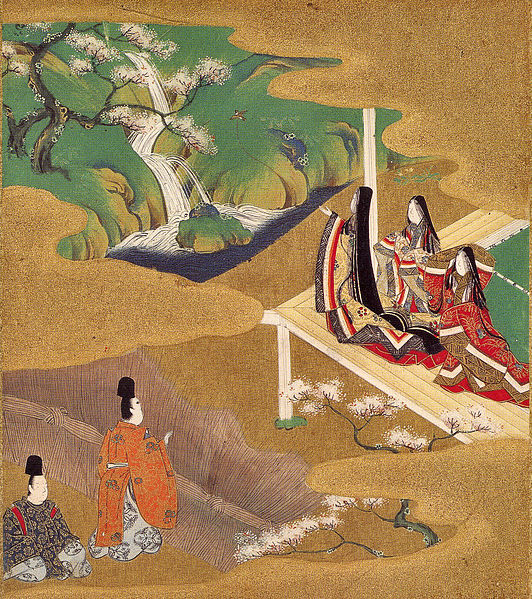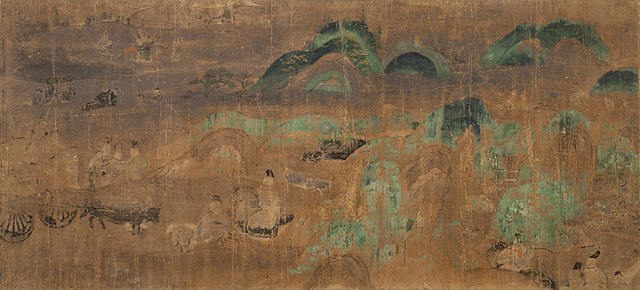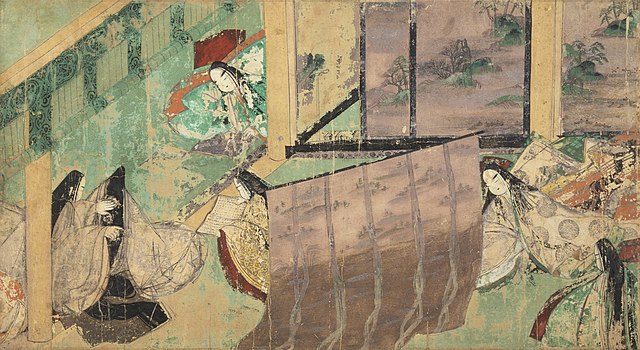Yamato-e (大和絵) is a style of Japanese painting inspired by Tang dynasty paintings and fully developed by the late Heian period. It is considered the classical Japanese style. From the Muromachi period, the term yamato-e has been used to distinguish work from contemporary Chinese-style paintings kara-e (唐絵), which were inspired by Chinese Song and Yuan-era ink wash paintings.
Scene from The Tale of Genji by Tosa Mitsuoki, from the 17th century Tosa school revival of the style
Rinpa school version of yamato-e landscape style on a pair of screens by Tawaraya Sōtatsu, 17th century
Scene from the Genji Monogatari Emaki Emaki, 12th century, Tokugawa Art Museum
"Eastern House Chapter", another scene from the Genji Monogatari Emaki illustrated handscroll of The Tale of Genji
Japanese painting is one of the oldest and most highly refined of the Japanese visual arts, encompassing a wide variety of genres and styles. As with the history of Japanese arts in general, the long history of Japanese painting exhibits synthesis and competition between native Japanese aesthetics and the adaptation of imported ideas, mainly from Chinese painting, which was especially influential at a number of points; significant Western influence only comes from the 19th century onwards, beginning at the same time as Japanese art was influencing that of the West.
Set of sliding doors of Frolicking Birds in Plum and Willow Trees by Kanō Sansetsu, 1631, Important Cultural Property
Mural painting from the Takamatsuzuka Tomb. National Treasure.
Panel from The Tale of Genji handscroll (detail). National Treasure.
Siege of Sanjō Palace







